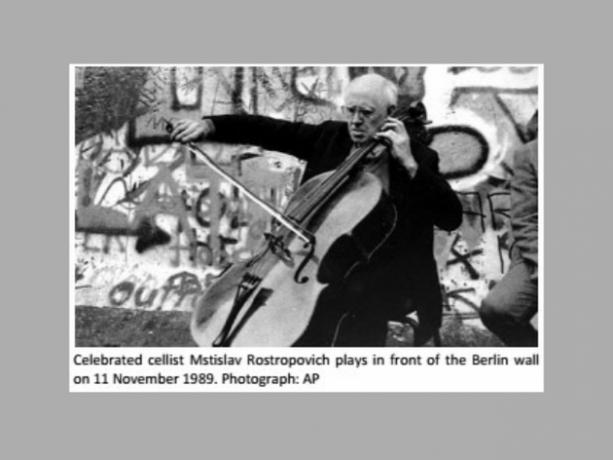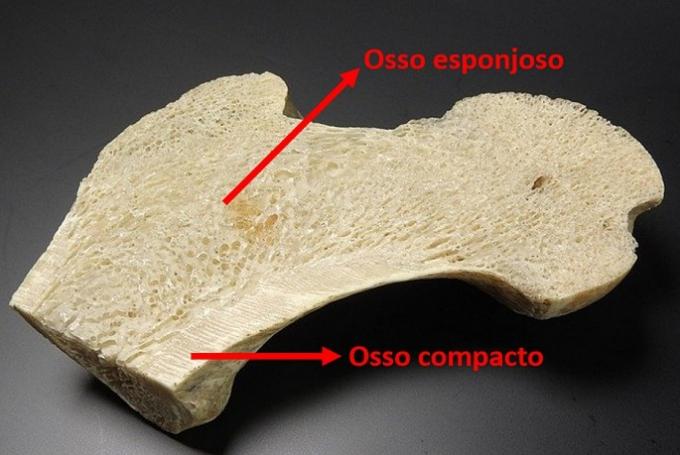The Second Modernist Generation in Brazil, also called the Generation of 30, extended from 1930 to 1945.
Test your knowledge of this period with 10 questions commented by our expert teachers.
question 1
About the second generation of Brazilian modernism, it is correct to say:
a) Indigenous and African culture were the main themes explored by writers from that period.
b) called the construction phase, the literary production of that moment was aimed at denouncing the Brazilian reality.
c) the Indian was elected as the national hero, further reinforcing the Brazilian identity.
d) lacking political engagement, at that time the concern was about improving the language.
e) with a strong Indianist content, the poetry of this phase focused on everyday themes.
Correct alternative: b) called the construction phase, the literary production of that moment was aimed at denouncing the Brazilian reality.
The literary production of the second modernist generation, also called the construction phase, presents a regionally and culturally diverse Brazil. Both the prose and the poetry of this period highlight the country's problems, making social denunciation one of its greatest weapons of affirmation.
With strong political engagement, many authors from this period were focused on pointing out the problems of different regions of Brazil, such as: social inequality, hunger, misery, oppression, exploitation, etc.
Sociopolitical, existential, metaphysical, spiritual, popular, urban and historical themes were the most explored at this stage.
question 2
About the characteristics of the prose of the second phase of modernism in Brazil is incorrect claim:
a) the literary production of this phase sought to present a more objective portrait of reality.
b) Northeastern regionalism represented one of the main expressions of the 1930 novel.
c) social denunciation and political engagement are two strong characteristics of the production of this period.
d) the use of colloquial language and regionalisms marked the novels published in this phase.
e) the destructive literature of this phase was essential to create a less politicized approach.
Correct alternative: e) the destructive literature of this phase was essential to create a less politicized approach.
The prose of the second generation modernist appears in a troubled period with the fall of the stock market (1929) of New York, in the United States, which would result in a major economic, social and political crisis in the world. In Brazil, we have the beginning of the Vargas Era and the approach of the military dictatorship.
Because of this scenario, the literary production of that moment was more politicized and constructive, seeking to portray in a more objective the Brazilian reality, as well as denouncing the country's social problems such as inequality, hunger, misery, etc.
For this, some writers of the period address themes related to the Northeast, such as drought, land disputes, coronelismo, etc. So, at that time, there was a great maturity in literary production, what became known as the novel of 30.
To demonstrate reality as it is, that is, as objectively as possible, many writers chose to use a more popular, colloquial language, full of regionalisms.
question 3
The prose of 30 was one of the highlights of the second modernist generation. At that time, literature played an important role in the dissemination of themes related to the Brazilian reality. Many writers stood out at this stage, except:
a) Rachel de Queiroz
b) Graciliano Ramos
c) José Lins do Rego
d) Clarice Lispector
e) Jorge Amado
Correct alternative: d) Clarice Lispector
Clarice Lispector stood out in the prose and poetry of the third phase of modernism in Brazil. His lyrical and intimate work explored human existential themes.
question 4
The poetry of 30 brought together works that were produced in Brazil during the second modernist generation (1930-1945). This phase represented one of the best moments in Brazilian poetry. Regarding the characteristics of these texts, it is correct to state:
a) presence of free verses
b) preference for formal language
c) excessive punctuation
d) centered on logic
e) lack of humor
Correct alternative: a) presence of free verses
The poetry of 30 was one of the most representative moments of the second modernist generation.
Centered on questions about human existence, social, religious and love themes, the poets of this phase sought a more philosophical approach.
The poetry of this period used white and free verses and also fixed form poetry, such as the sonnet.
The main characteristics found in these texts are the lack of punctuation, the use of everyday language, the presence of humor and irony, in addition to fragments contrary to rationality and logical order.
question 5
Themes related to the northeastern universe were explored by several authors in the second phase of modernism in Brazil. From the alternatives below, the novel that does not have this theme is:
a) Dry Lives, by Graciliano Ramos
b) The bagaceira, by José Américo de Almeida.
c) Fifteen, by Rachel de Queiroz
d) Menino do engenho, by José Lins do Rego
e) The country of carnival, by Jorge Amado
Correct alternative: e) The country of carnival, by Jorge Amado
Published in 1931, Jorge Amado's novel, O País do Carnaval, portrays the life of a Brazilian intellectual and exposes his thoughts on Carnival and the theme of miscegenation in Brazil.
In the other alternatives, we have:
a) Published in 1938, Graciliano Ramos's novel, Vidas secas, addresses problems such as drought in the Northeast, hunger and misery of migrants.
b) Published in 1928, José Américo de Almeida's novel A bagaceira, which marks the beginning of the 1930's prose, portrays the theme of drought and the lives of migrants.
c) Published in 1930, Rachel de Queiroz's novel, O Quinze, deals with one of the biggest droughts that hit the Northeast in 1915.
d) Published in 1932, José Lins do Rego's novel, Menino do engenho, deals with the sugar cycle in Brazil, and is set in northeastern mills.
question 6
In the middle of the way there was a stone
There was a stone in the middle of the way
had a stone
In the middle of the way there was a stone
I will never forget this event
In the life of my retinas so tired
I'll never forget that halfway
had a stone
There was a stone in the middle of the way
In the middle of the way there was a stone
(Midway, Carlos Drummond de Andrade)
Published in the magazine Antropofagia in 1928 and later in his work some poetry (1930), the poem by Carlos Drummond de Andrade caused a scandal at the time and was heavily criticized. About this it is correct to say:
a) the poem represented an attack on the politicians of the time.
b) the poem harshly criticizes human beings' inattention.
c) the poem uses skepticism to address a common topic.
d) the poem presents criticisms related to the social shock present in the country.
e) the poem uses irony and sarcasm to refer to the human condition.
Correct alternative: e) the poem uses irony and sarcasm to refer to the human condition.
Carlos Drummond de Andrade was, at the time, much criticized for the publication of the poem “In the middle of the road”.
With a simple and accessible language, the writer uses repetition and redundancy to mock the human condition. The “stone”, a word repeated 7 times, represents the obstacles that human beings encounter in life.
question 7
I won't rhyme the word sleep
with the mismatched word autumn.
I will rhyme with the word meat
or any other, which all suits me.
Words are not born tied,
they jump, kiss, dissolve,
in the free sky sometimes a drawing,
they are pure, wide, authentic, inaccessible.
[...]
(poem consideration, Carlos Drummond de Andrade)
The language function explored by the author in the excerpt above is called:
a) Conative
b) Metalinguistics
c) Referential
d) Emotive
e) Factual
Correct alternative: b) Metalinguistics
In the excerpt from the poem by Carlos Drummond de Andrade, the author is concerned with explaining the poetic production, and thus, uses the metalinguistic function.
This function is related to “code of communication” which, in this case, is written language. Note that metalanguage is the language that describes itself. That is, it uses the code itself to explain it.
question 8
(Vunesp) Based on the following excerpt, tick the correct alternative.
"I knew Madalena was too good, but I didn't know everything at once. It revealed itself little by little, and never fully revealed itself. It was my fault, or rather it was this wild life that gave me a wild soul.
And, speaking like that, I understand that I'm wasting my time. Indeed, if my wife's moral portrait escapes me, what is the use of this narrative? For nothing but I am forced to write.
When the crickets sing, I sit here at the dining room table, drink coffee, light my pipe. Sometimes the ideas don't come, or come very numerous - and the sheet remains half-written, as it was the day before. I reread a few lines, which I dislike. It's not worth trying to fix them. I push the paper away."
a) This excerpt is from the novel St Bernard by Graciliano Ramos. The narrator is the central character of the book. He begins to reflect on his own life after the death of Madalena, his wife.
b) This is the novel by Machado de Assis, Dom Casmurro, in which the narrator reviews his life after his wife's death.
c) In this excerpt from Grande Sertão: Paths, Guimarães Rosa speaks of the hinterland. The narrator is a cangaceiro who recalls the life he had with his wife before she died.
d) The author of this passage is José Lins do Rego. in your novel dead fire, tells the story of José Amaro, the artisan who is proud of his profession, but who feels weakened after his wife's death.
e) The excerpt presented speaks of the anguish of writing. A rude man tries to clean up his life by telling his own story. This is the subject of the novel the bagaceira by José Américo de Almeida.
Correct alternative a) This excerpt is from the novel St Bernard by Graciliano Ramos. The narrator is the central character of the book. He begins to reflect on his own life after the death of Madalena, his wife.
Published in 1934, the novel by Graciliano Ramos, St Bernard, portrays the life of Paulo Honório, the narrator and the main character. He buys the São Bernardo farm, becoming a farmer.
There, he marries Madalena and has a child with her. However, due to her violent personality, the marriage ends with Madalena's suicide.
question 9
(UFT) Read the following text fragment.
The desolation of the first famine arrived. It came dry and tragic, rising from the dirty bottom of empty bags, from the fleshless nudity of scraped cans.
– Mom, where's the dinner?
- Shut up boy! It's coming!
– Come what!…
Distressed, Chico Bento felt his pockets… not a sad penny squashed…
He remembered the new, big, striped hammock he'd bought in Quixadá for the Vicente Valley.
It had been for the trip. But better sleep on the floor than see the boys crying, their stomachs rumbling with hunger.
They were already on the Castro road. And they scrambled under an old dry whitewood, naked and twisted, as it were, because those stumps pointed to the sky had nothing to shelter.
The cowboy left with the net, resolute:
– I'll go there to that winery, see if I can find a way…
He came back later, without the net, bringing a brown sugar and a liter of flour:
– It's here. The man said that the hammock was old, that was all, and on top of that he was pitying...
Hungry, the kids advanced; and even Mocinha, always more or less silent and indifferent, eagerly extended her hand.
QUEIROZ, Rachel de. The Fifteen. Rio de Janeiro: José Olímpio, 1979, p. 33.
“O Quinze”, the debut novel by Rachel de Queiroz, published in 1930, portrays the intense drought that marked the year 1915 in the Ceará backlands. Considering the presented fragment, it is CORRECT to affirm.
a) The language used by the author to build the novel is close to orality, as seen in the fragment. This resource is used to counteract the extremely elaborate writing of some first generation modernists, such as Oswald de Andrade.
b) In the narrative, closely linked to the proposals of social denunciation of the regionalists of 30, the drama of drought, misery and human degradation stand out, striking in scenes such as the fragment quoted.
c) The fragment presents a moralizing discourse, recurrent in second-generation modernist novels, and highlights the drama experienced by Chico Bento's family, facing the difficulties of survival.
d) Despite referring to the drought that marked the year 1915, the novel puts in the foreground the violence and disrespect that mark social relations, regardless of weather conditions; an example of this is the relationship of dispossession between Chico Bento and the man from the bodega.
e) Although published in the early 1930s, a time of intense political and cultural changes in the country, the novel is aesthetically and thematically linked to the literary proposals of the first modernist generation.
Correct alternative: b) In the narrative, closely linked to the proposals of social denunciation of the regionalists of 30, the drama of drought, misery and human degradation stand out, striking in scenes such as the one in the aforementioned fragment.
The excerpt from Rachel de Queiroz's text addresses the theme of drought, hunger and poverty. The novel, published in 1930, portrays the story of the migration of Chico Bento and his family, as a result of the drought that hit the northeast in 1915.
question 10
(Ibmec-SP)
1st part of the poem “Eu, Etiqueta” - Carlos Drummond de Andrade
A name is stuck to my pants
which is not mine from baptism or from the registry office,
A name…strange.
My jacket has a drink reminder
that I have never put in my mouth in this life.
On my shirt, the cigarette brand
I don't smoke, I haven't smoked until today.
My socks talk about product
that I've never experienced
But they are communicated at my feet.
My sneakers are colorful proclaims
of something unproven
by this long-age taster.
My scarf, my watch, my key chain,
my tie and belt and brush and comb,
my cup, my cup,
my bath towel and soap,
my this my that,
from head to toe,
are messages,
speaking letters,
visual screams,
use orders, abuse, recidivism,
custom, habit, permanence,
indispensability,
and make me traveling advertisement-man,
slave of the announced matter.
Carlos Drummond de Andrade is considered the most important poet of our Modernism and belonged to the second generation of this literary period. Point out the main characteristics of this phase, visibly detected in the poem:
a) Literature marked by obscurity. Reality is revealed in an imprecise and vague way.
b) Politicized literature, marked by the questioning of reality and committed to the social transformations faced by the country.
c) Subjectivity, the cult of the “I”, individualism and freedom of expression.
d) Excessive worship of form, expressed through syntactic juggling and abuse of literary figures, which results in an exaggerated refinement of language.
e) Predominance of reason over feelings and use of a more sober language, without excesses and figures of speech.
Correct alternative: b) Politicized literature, marked by the questioning of reality and committed to the social transformations faced by the country.
The literary production of the second modernist generation questions reality, pointing out several social and economic problems in Brazil, thus taking a more politicized stance.
In the excerpt from the poem by Carlos Drummond de Andrade, the poet criticizes the advertised advertising of products in various everyday objects, which makes him a "slave of the advertised material".
Learn more about the topic:
- Modernism in Brazil
- Modernism in Brazil: characteristics and historical context
- Second Generation Modernist - 2nd Phase of Modernism
- Authors of the Second Phase of Modernism in Brazil
- Romance of 30
- Poetry of 30



